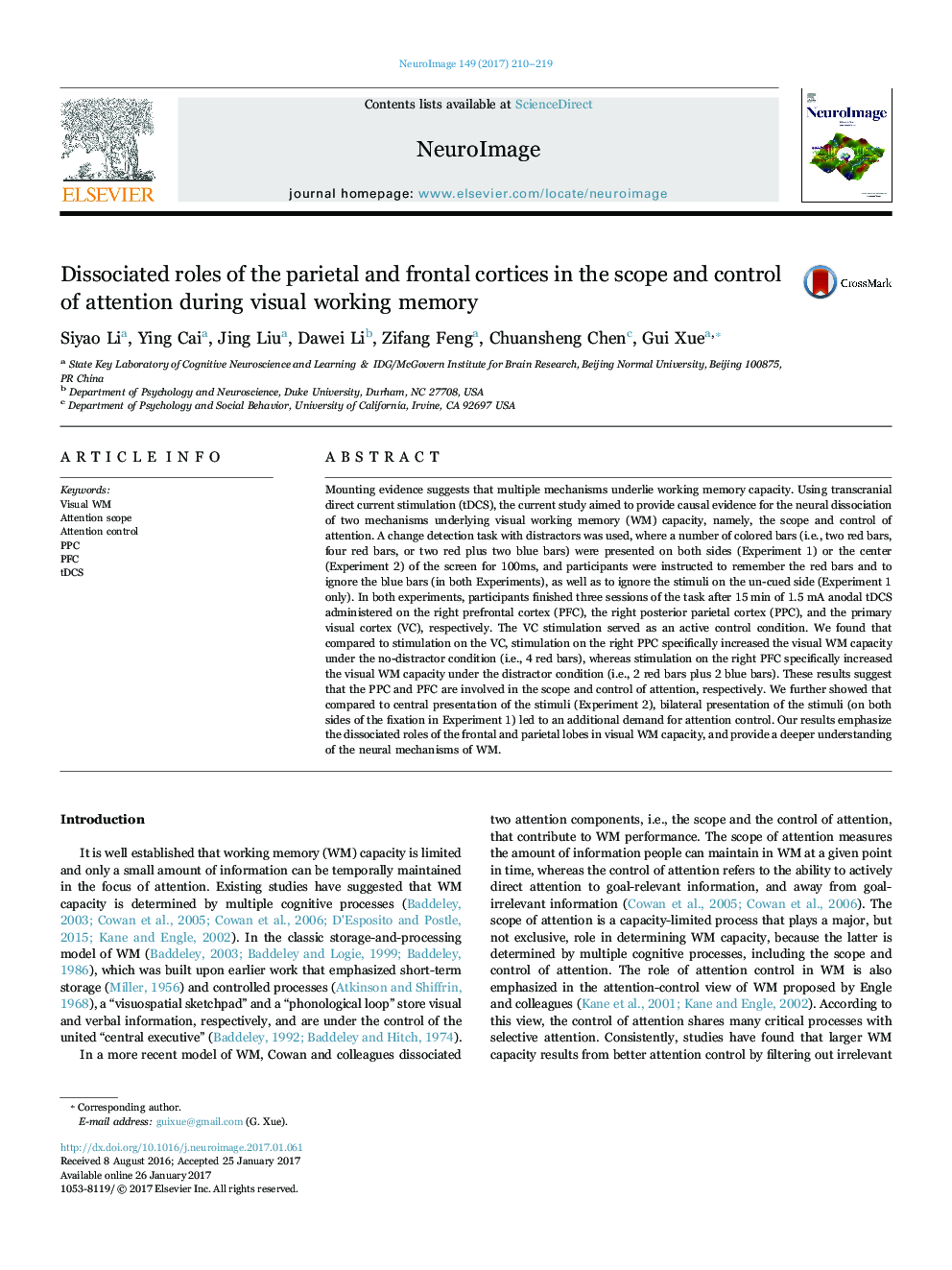| Article ID | Journal | Published Year | Pages | File Type |
|---|---|---|---|---|
| 5631246 | NeuroImage | 2017 | 10 Pages |
â¢Attention control and attention scope during visual WM were examined by tDCS.â¢Anodal tDCS on the right PPC specifically enlarged attention scope in visual WM.â¢Anodal tDCS on the right PFC specifically enhanced attention control in visual WM.â¢Bilateral presentation introduced an additional demand on attention control.
Mounting evidence suggests that multiple mechanisms underlie working memory capacity. Using transcranial direct current stimulation (tDCS), the current study aimed to provide causal evidence for the neural dissociation of two mechanisms underlying visual working memory (WM) capacity, namely, the scope and control of attention. A change detection task with distractors was used, where a number of colored bars (i.e., two red bars, four red bars, or two red plus two blue bars) were presented on both sides (Experiment 1) or the center (Experiment 2) of the screen for 100ms, and participants were instructed to remember the red bars and to ignore the blue bars (in both Experiments), as well as to ignore the stimuli on the un-cued side (Experiment 1 only). In both experiments, participants finished three sessions of the task after 15Â min of 1.5Â mA anodal tDCS administered on the right prefrontal cortex (PFC), the right posterior parietal cortex (PPC), and the primary visual cortex (VC), respectively. The VC stimulation served as an active control condition. We found that compared to stimulation on the VC, stimulation on the right PPC specifically increased the visual WM capacity under the no-distractor condition (i.e., 4 red bars), whereas stimulation on the right PFC specifically increased the visual WM capacity under the distractor condition (i.e., 2 red bars plus 2 blue bars). These results suggest that the PPC and PFC are involved in the scope and control of attention, respectively. We further showed that compared to central presentation of the stimuli (Experiment 2), bilateral presentation of the stimuli (on both sides of the fixation in Experiment 1) led to an additional demand for attention control. Our results emphasize the dissociated roles of the frontal and parietal lobes in visual WM capacity, and provide a deeper understanding of the neural mechanisms of WM.
